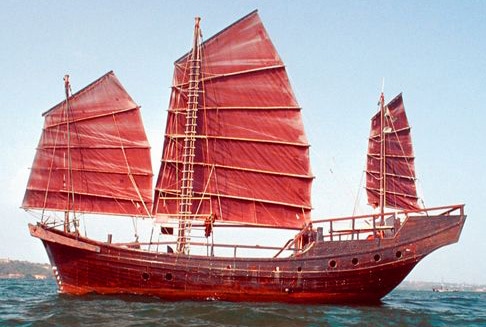WING CHUN HISTORY
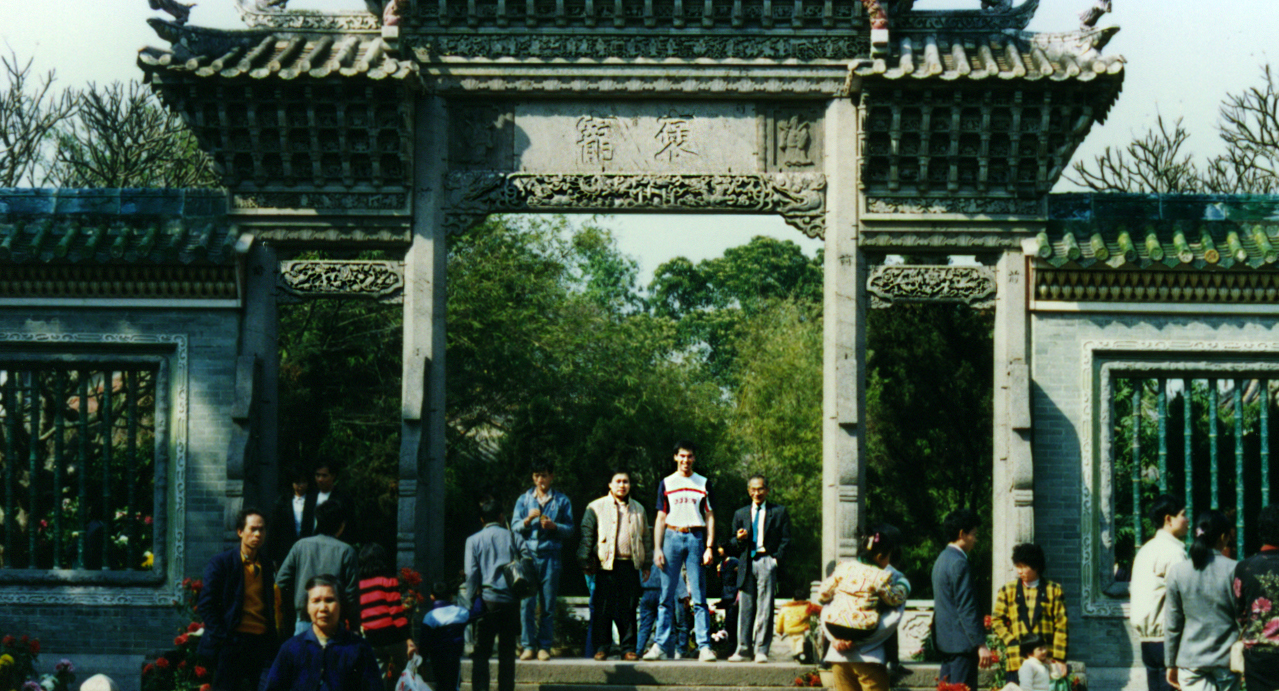 James, Warren Tzeto and Si Gung Ip Chun looking relaxed and happy in Futshan. Jan 1989.
James, Warren Tzeto and Si Gung Ip Chun looking relaxed and happy in Futshan. Jan 1989.
James Sinclair began his Wing Chun Kuen journey in the early 1970’s. At this time there was not much access to information on Wing Chun history.
Largely the history was passed down orally, and although Grandmaster Ip Man wrote on the subject, it has taken considerable research by many people to get closer to the truth of the Art, that so many people now love and practice.
It appears that many students in the 1970’s were informed that the Art was 400+ years old, and that the development was from a Buddhist Nun (Ng Mui) observing a fight between and snake and a crane. This legend, whilst interesting, may well be untrue.
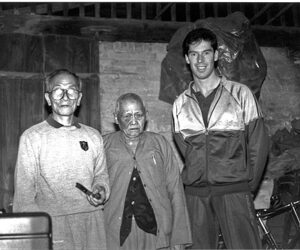
The generational practitioners names were fairly well known and all tallied to todays information.
On the matter of dates it was difficult to come by substantial information. James knew it could not make sense in terms of a 400 year timeline. Especially when there were but a handful of generations!
When you consider that martial art generations, in a logical and minimalist system like Wing Chun, would only be a few years apart, the time scale was always a struggle.
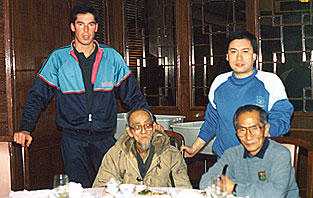
In 1989 James Sinclair and Grandmaster Ip Chun visited Foshan (Futsan) in China. There James met Pan Nam and various other Wing Chun teachers.
One particular gentleman, who was a friend of Grandmaster Ip Man, stated that they had both met Dr Leng Jan. This was dismissed as the daydreams of a very old man, but he appeared very sincere.
He must now be long passed and we will never know. But was it possible?
| GRANDMASTER | BORN | DIED | AGE |
|---|---|---|---|
| Dr Leung Jan | 1826 | 1901 | 75 |
| Leung Bik | 1845 | 1911 | 66 |
| Chan Wah Shun | 1849 | 1913 | 64 |
| Ip Man | 1893 | 1972 | 79 |
| Ip Chun | 1924 | - |
History and Legends of Wing Chun
The Wing Chun system of martial arts was developed in southern China approx. 250-300 years ago.
During the reign of Emperor K’anghsi of the Ching Dynasty (1662-1722), the Shaolin monastery called Siu Lam of Mt. Sung, in the Honan province, had become very powerful through Kung Fu training. The Manchurian government was afraid of an uprising and sent troops to destroy the Siu Lam. However, it was internal treachery that sealed the fate of the monastery, with traitorous monks setting it alight.
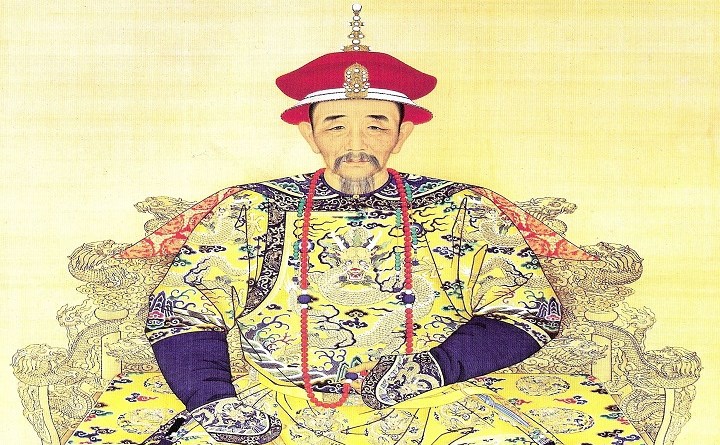
Only a handful of monks managed to escape the onslaught of the Manchurian army. Ng Mui, a Buddhist Nun and Grand master of Sui Lam Kung Fu and the creator of the Wing Chun system was one of them. Ng Mui later developed a system of Kung Fu designed to overcome the Sui Lam systems of the Manchurian army.
Her ideas of a close quarter combat were totally different from the Sui Lam systems of that time. She discarded many of the old traditions, which often required years of dedicated practice at each stage, and started to develop this new system based on the principles of winning at all costs, using speed and subtlety to overcome an opponents’ natural advantages.
Ng Mui’s system, as yet unnamed, had less stress on muscular strength (lik), bone conditioning, or muscular flexibility. The emphasis lay in sudden contraction and relaxation (ging) causing one to explode into action with natural weapons such as finger jabs to the eyes, elbow strikes to face and the powerful use of the knees and feet to the opponents lower body.
Ng Mui later met and befriended a young woman named Yim Wing Chun, who was just fifteen years of age. Little is known of Yim’s childhood other than her mother died when she was in her teens and her father, Yim Yee, was falsely accused of a crime.
Yim Wing Chun and her father had moved to Mt. Tai Leung along the border of Yunan and Szechwan provinces, rather than risk imprisonment. Here they set up a bean curd shop. Yim was a beautiful and intelligent young woman but soon attracted the attentions of a goal thug who wanted to marry her. He later tried to rape her.
Ng Mui took Yim Wing Chun into the mountains and taught her the techniques of the new system she had devised in a bid to protect the young woman. Under Ng Mui’s direction, Wing Chun, studied Kung Fu religiously and mastered the style.
Wing Chun, like Ng Mui, knew only too well that in a street situation the male aggressor is already emotionally unstable and, therefore, the female had to respond using the skills of economy of motion using her opponents strength to her advantage. She then returned to the village and defeated the local bully. After this event Ng Mui named the new style, Wing Chun Kuen as an honour to her protégé.
Roughly translated Wing Chun means ‘Perpetual/Beautiful Springtime and Kuen is fist or fist fighting style.
Wing Chun passed on her skills to her husband and he in turn taught his brother. The system was passed on to many others to become the popular martial art it is today.
Yim Wing Chun continued to fight for the overthrow of the Manchurian Government until her death, keeping a promise to her Grand Master Mentor Ng Mui.
History or Legend Two
The origin of Wing Chun Kung Fu can be found in the turbulent, repressive Ching (Manchurian) dynasty of over 300 years ago.
The Qing Dynasty was the final imperial dynasty in China, lasting from 1644 to 1912. It was an era noted for its initial prosperity and tumultuous final years, and for being only the second time that China was not ruled by the Han people.
Han Chinese (also called Han; simplified Chinese: 汉族; traditional Chinese: 漢族; pinyin: Hàn zú) is an ethnic group within East Asian people. 92% of the Chinese population and more than 97% of the Taiwanese population are Han. Out of the entire human population in the world, 19% are Han Chinese.
It was a time when 90% of the Chinese, the Hans, were ruled by the 10% minority, the Manchurians. The Manchurians treated the Hans unjustly. For instance, all the female Han infants were made to bind their feet so that when they grew up they would be dependent upon their parents or husband. Men were made to shave the front of their heads and were forced to wear a pigtail (queue) to distinguish them as Han males, not Manchurian.
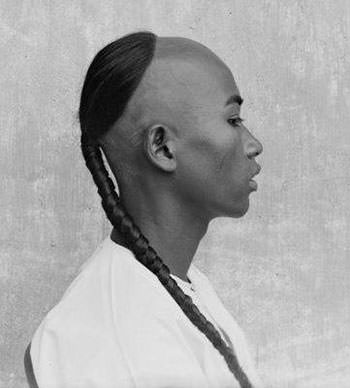
The work opportunity of the Hans was also restricted. They were not allowed to hold a position above a certain level of Government. Heavy tax burdens were placed on the country, so that the Manchurians could have economic control of the Han people.
Martial Arts training was also banned for the Hans; however the Manchurian Government was adopting the Han culture. The Manchurians respected the Siu Lam Temple as a Buddhist sanctuary, since the Manchurians were Buddhists as well.
When all weapons were outlawed by the Manchurians, the Hans began training a revolutionary army in the banned art of Kung Fu.
The Siu Lam Temple became the secret sanctuary for preparatory training of a classic style which took 15 to 20 years for each person to master.
Five of China’s grandmasters met to discuss the merits of each of the various forms of kung Fu, in order to develop a form with a shorter learning period. By choosing the most efficient techniques from each style, they developed training programs that would develop an efficient martial artist in 5 to 7 years, one-third the original time.
However before this new form could be put into practice, the Siu Lam Temple was raided and burned by the Manchurians Ng Mui, a nun, was the only survivor of the original five grandmasters.
Ng Mui passed her knowledge onto a young orphan girl whom she named Yim Wing Chun. The name means “Praise Spring”, representing “hope for the future”, a future without Manchurian domination and injustices.
In turn Yim Wing Chun passed her knowledge to her husband, Leung Bok Chao.
Through the years the style became known as Wing Chun. Its techniques and teachings were passed onto a few carefully selected students.
After Yim Wing Chun passed away, Leung Bok Chao taught his nephew Wong Wah Bo.
Wong Wah Bo joined the Red Junk Opera Company and taught Leung Yee Tai who was an actor in the company.
Leung Yee Tai and Wong Wah Bo both taught Leung Jan who in turn became famous for his skill in Wing Chun kung fu.
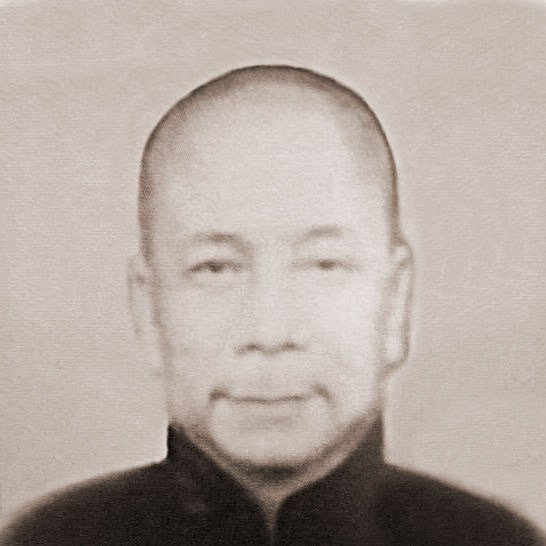
Dr Leung Jan was born Leung Tak-wing in 1826 in Heshan, Guangdong, His father later moved to Kuai Zi, Foshan and ran a traditional Chinese medicine Dit Da clinic there.
At the age of 18, Leung Jan was trained by Leung Yee-tai in Southern Shaolin skills.
Yee-Tai later introduced Jan to his partner Wong Wah-bo. Wong was also a Gulao (古勞) resident like Jan, and he taught Jan the whole Wing Chun skill set.
From 1870 onwards, under the nickname Leung Jan, he made a living as Dit Da practitioner within the Wing Sang Tong (榮生堂), also known as Jan Sang Tong (贊生堂),[1] in Foshan and would occasionally take in students to train them in Wing Chun privately.
His name eventually became well known due to his wins in competitive bouts and he was respected by other martial artists.
He was called Mr. Jan of Foshan (佛山贊先生). He later became a government official and was known as King of Wing Chun Kuen (詠春拳王). His training and medical hall was looked after by his student Lee Wah (李華), nicknamed Woodman Wah (木人華).
Leung Jan opened an herbal shop in Fat Shan, where he practiced medicine. At night he trained his sons and Chan Wah Shun.
After Leung Jan passed away,Chan Wah Shun took over the instruction of Wing Chun and Leung Bik left the province.
In time, Chan Wah Shun accepted Yip Man as his last disciple.
History or Legend Three
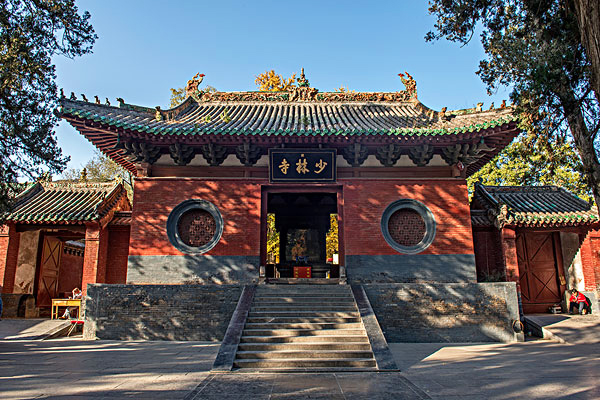
The history of Wing Chun begins in the Siu Lam temple, the cradle of the martial arts around the world, with the culmination of hundreds of years of experience. The Ming Dynasty (1368-1644) saw a blossoming of Siu Lam martial arts as never before. Almost all the residents of Siu Lam practiced, and a powerful detachment of several hundred warrior-monks was organized. The Ming government treasured the warrior-monks, sending them on expeditions to border areas. After the Manchurians conquered China, the remnants of the Ming family encouraged export of the secret knowledge of Siu Lam fighting arts to rebel troops to defend the Han nation and to try to restore the Ming regime with the slogan: “Overthrow Ching, Restore Ming”. This time period was known as the Ching Dynasty.
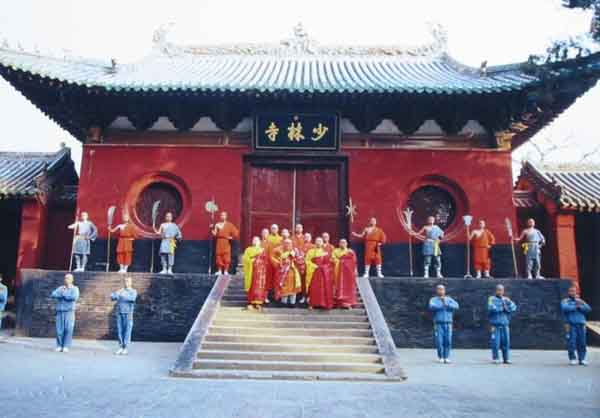 The conquest of China by the Manchu in the 17th century and harsh actions created distrust among the people towards the Ching government. The Manchu, excellent warriors in their own right, kept the Ming dissidents under control, imposing on all the badge of subservience, the “queue” which symbolized for them a horse’s tail. Animosity and discontentment towards the Manchurians became more visible. In the spirit of “Overthrow Ching, Restore Ming”, many boxers joined various secret societies hoping to return the Ming to power. Formations of underground movements were the precursory events that brought Wing Chun and many other Chinese martial art styles into existence. Thousands from the north retreated southward to southern China, disseminating their martial arts skills as they went. Although unsuccessful in their aims, the boxers seeking a return of the Ming did achieve a result. They spread the Siu Lam boxing doctrines to all corners of China. Many of them were later killed by the British gun during the eight nations allied military forces era.
The conquest of China by the Manchu in the 17th century and harsh actions created distrust among the people towards the Ching government. The Manchu, excellent warriors in their own right, kept the Ming dissidents under control, imposing on all the badge of subservience, the “queue” which symbolized for them a horse’s tail. Animosity and discontentment towards the Manchurians became more visible. In the spirit of “Overthrow Ching, Restore Ming”, many boxers joined various secret societies hoping to return the Ming to power. Formations of underground movements were the precursory events that brought Wing Chun and many other Chinese martial art styles into existence. Thousands from the north retreated southward to southern China, disseminating their martial arts skills as they went. Although unsuccessful in their aims, the boxers seeking a return of the Ming did achieve a result. They spread the Siu Lam boxing doctrines to all corners of China. Many of them were later killed by the British gun during the eight nations allied military forces era.
Early in the 1700’s, during the reign of Emperor K’ang Hsi (1662-1723), the Manchurians became concerned about the Siu Lam Temple’s rebellious activities as well as their advanced fighting abilities and continued development of their martial arts system. Deciding to eliminate the threat of these rebels and their rebel leaders, the Manchurians sought to exterminate the Siu Lam monks to prevent them from spreading their martial arts skills and rebellious activities. The Emperor even sent his own officials to live like monks at the Siu Lam Temple to spy on rebel’s activities but many failed. Eventually the Southern Siu Lam Temple was burned and destroyed by K’ang Hsi’s order.
The Siu Lam Temple was not only a repository of martial arts knowledge and rigorous training academy but, just as important, a stimulus for other martial art styles. Many of the systems today were born out of Siu Lam roots. Prior to the destruction of the Siu Lam Temple, a comprehensive and high-level martial art system was developed which was formulated through multiple generations of Siu Lam knowledge and experience.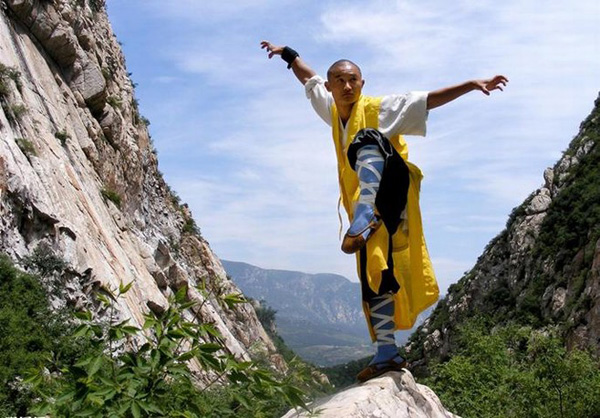
During that time it was strictly forbidden to teach or reveal the art to anyone that didn’t belong to the secret societies or were non-Han. Because of this reason, Wing Chun took on a mysterious personal. Many years later, a famous novelist wrote a martial art fiction titled 10,000 Year Ching. The novel talks about Ng Mui, Chee Sim, Hung Hei Goon, and Fung Sai Yuk. Many fairy tales, movies and stories about Hung Kuen and Wing Chun were based on this novel. With each telling of the story from the novel, embellishments and exaggerations were added until the story reached the level of a fairy tale. Due to the nature of secret societies, these fictional stories and legends came to be the accepted truth as to the creation of Wing Chun.
After the destruction of the Southern Siu Lam Temple, Cheung Ng fled to Guangdong province. In order to keep his identity and Siu Lam background from the Manchurian government, Cheung Ng founded the Red Boat Opera Troupe in Fat Shan. Known for its discipline and rules of conduct, the Red Boat Opera Troupe was an organization of talented stage performers who traveled in up and down the rivers of Southern China in red boats. This time period around the mid-to-late-1700s was known as the Red Boat Period.
Wing Chun comes from snake and crane shape boxing around 1810. In Chuan Jiao, Fu Jian, Yim Yee was going to be arrested by the government, so he fled with his daughter, Wing-Chun, and sold tofu for a living. His martial arts were healthy, beautiful, and effective and he taught them to Wing-Chun. One day while she was washing clothes by the river she saw a snake and crane fighting. She watched and learned from them and later she mixed the inspiration with her knowledge of Fu Jian Siu Lam styles to suit herself.
A merchant from Shang Xi named Leung Bok-Lao, who had been a student of the Hunan Siu Lam Temple, came to relax in a hotel. By chance, one day under the light of the moon he saw Yee and his daughter Wing-Chun practicing martial arts beside the tofu grinders. He thought Wing-Chun was beautiful and had excellent technique. He fell in love with her. He stayed and passed by many times to talk with them about martial arts. His first wife had died, and he though Wing-Chun had excellent fighting skills, so he wanted to marry her. He had a friend ask, but Wing-Chun was too embarrassed to answer. Yim thought Leung was good-looking, and was a fellow Siu Lam follower, so he agreed for his daughter and they were married.
After a few years, Yim Yee died, and Leung and Wing-Chun moved to Shang Xi. But due to the constant fighting of bandits and soldiers, they moved again to north Guangdong (Ngam Hong Yuen village). They opened a small business and taught “Wing Chun Kuen” to some students.
In about 1815, they moved the school to Zhao Quing and continued teaching. The Red Junk Opera Company would often travel between Zhao Quing and Fat Shan. Wong Wah-Bo (Mo-Sang), Leung Yee-Tai (Mo-Deng), Ah Kam (Dai Fa Min), and Siu Fook (Siu-Sang) met them and learned Wing Chun. The Opera performers later went back to Fat Shan.
When Wong Wah-Bo retired in Fat Shan, he taught the son of an herbal doctor named Leung Jan. Leung Jan taught many, many, students including Chan Wah, Chan Kwai and Leung Kai. Chan Wah graduated and went on to teach Chan Yu-Min, Ng Jung-So, etc.
History or Legend Four
The history of the Wing Chun system, as with the majority of Chinese systems, is shrouded in the mists and legends of the past. It, like most of the well-known styles, has its “Siu Lam connection”. Legend has it that the founder of the system was a Buddhist nun named Ng Mui who was one of a group of experts who were researching the existing systems in order to develop a more streamlined fighting style which could be taught quickly so as to aid the Chinese in rising up against their oppressors.
Before their knowledge could be systematized and passed on, the Temple was razed to the ground, resulting in the death of many of the masters residing there. Ng Mui, being a nun, was not at the Temple at the time (only monks being permitted to stay there) and so managed to escape the violence. She fled southwards, some versions of the story having her traveling to Sichuan province while others have her ending up in Fu Jian. While in the region she met up with Yim Yee Gung, a friend and past student of her senior, the monk Ji Sin, one of the “Five Elders” of Siu Lam.
Prior to this, Ng Mui had witnessed a fight between a snake and a crane and from this event had been finally able to systematize the knowledge which she and her colleagues had been experimenting with. On learning that the daughter of Yim Yee Gung, the beautiful Yim Wing Chun, was being forced into marriage with a local ruffian, Ng Mui devised a way of stalling for time during which she taught the young Wing Chun her “new” method.
As far as records accurately describe, we know absolutely nothing of Yim Wing Chun or the inheritors of her skills — that is, until we come across the one man in the history of the system whose existence can be verified and who is known to have taught the system. His name was Leung Jan, an herbal doctor who lived in the southern Chinese city of Fat Shan during the early 19th century. As a fighter he was renowned for his unrivalled skill and was reputed to have never been beaten. He taught only a handful of students, the best known of whom were his two sons, Leung Chun and Leung Bik, and Chan Wa Sun who was also known as “Money-changer Wa”.
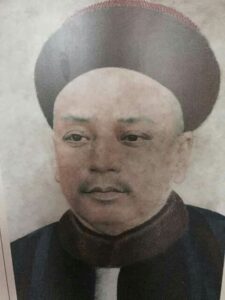
Leung Jan himself was said to have learnt from two people, Wong Wa Bo and Leung Yee Dai, both of whom were said to have been experts at different aspects of Wing Chun, and at least one of whom (Leung Yee Dai) was a traveling performer with a Chinese opera troupe which moved from place to place by boat.
Wing Chun, according to legend, was a style of Chinese martial arts technique designed by the Siu Lam monks for the smaller stature of women fighters. Although there are many legends about the origins of what have become traditional Cantonese martial arts, one legend avers that, after escaping the destruction of the Fu Jian Siu Lam monastery, a nun named Abbess Ng Mui taught her own style of Kung Fu to a young woman whom she adopted named Yim Wing-chun , whose name means “Sing Praise Spring,” from whom the style gets its name. Wing-chun was being bullied into marriage by a local warlord but, by learning from Ng Mui, was able to defeat the warlord in hand to hand combat and marry her own chosen fiancé. The style was then passed down their family line.
Unfortunately, this legendary history cannot be confirmed and has been the subject of debate for decades. Other alternative histories for Wing Chun typically involve connections to the Triads, revolutionary groups, or the Hakka people of southern China.
History of Legend Five
One alternative explanation for the distant origins of Wing Chun is not so exotic. This explanation asserts that Wing Chun was practiced by the members of the Red Boat Opera Society, a revolutionary group under cover as traveling entertainers on a riverboat. The explanation is that while they were highly trained martial artists (in the Chinese opera tradition) their tasks as spies and assassins required specialized skills. While actual assassinations would be carried out using poison or knives, the targets would typically be protected by bodyguards. If these guards noticed an unauthorized person at night, they would seize the person, call for help, and disable the person to be held for interrogation. Thus, according to this explanation, Wing Chun was developed. It was designed to deal with an opponent who seized (rather than struck) and it was designed to silence that opponent immediately. This would explain certain technical aspects of Wing Chun (such as the emphasis on close-range combat and the many strikes to the throat or diaphragm)
Wing Chun Kuen has its origin from the Siu Lam temple, Fu-Kien of Kwang Tung Province, southern China. Legend has that Yim Wing Chun’s father; Mr. Yim Yee earned his living by selling bean curd in a place near Mountain Kau-Lin. Because of the “Overthrow Ching, Restore Ming” slogan, the Buddhist abbess Ng Mui had to live her life on the run. Yim Wing Chun was forced to marry a local warlord. On one occasion, Ng Mui traveled by the village and overheard the crying voice from the young girl Yim Wing Chun in the middle of the night. After learning what was happening to Yim’s family, Ng Mui was angry with the fact that such young girl being forced against her own will. She then decided to teach Yim Wing Chun the effective fighting techniques that she had developed after escaping from Sil Lum massacre. After practicing with Ng Mui for a short period of time, Yim Wing Chun was able to defeat the local warlord and free herself from the forced-marriage.
Ng Mui continued to travel the road ahead, hoping to recruit more followers to practice martial arts, in order to one day overthrow the Ching Government. Before leaving Fu Kien, she taught the young girl Yim all the fighting techniques that she developed by studying the fighting movements between a snake and a crane. With the help of Buddhist abbess Ng Mui, Wing Chun developed her own martial arts technique. When Wing Chun requested to give the name of this new martial arts system, Ng Mui suggested using her name. Thereafter, Wing Chun Kuen was formally named.
After her marriage, Yim Wing Chun taught Wing Chun style to her husband, Leung Bok Chau. This was the time that Wing Chun Kuen was formally passed on to others. Since Leung Bok Chau had a close friendship with Leung Lan Kwei, Wong Wah Bo and Leung Yee Tai, he exchanged the Wing Chun techniques with them for the Luk Dim Bun Kwan. Later, Leung Bo Chau traveled with his friends. During the journey, they studied Wing Chun Kuen by heart and become totally familiarized with this technique with a short period of time. From then onward, Luk Dim Bun Kwan was also included in the Wing Chun system as one of the weapon forms. Therefore, Leung Lan Kwei, Wong Wah Bo and Leung Yee Tai could be treated as Yim Wing Chun’s grand students.
When Wong Wa Bo retired at age sixty, he lived at Ching Wan street of Fai Chi town in Fat Shan. A famous herbal doctor, Leung Jan, also lived on that street. Owing to his good reputation, Fat Shan people always referred him as “Jan Sin Shin” (Jan the god). Wong Wah Bo always visited Jan Sin Shin at his free time and later, Wong taught Jan Sin Shin the Wing Chun fighting system.
Though Jan Sin Shin had practiced martial arts before, he still was not satisfied. When he started practicing Wing Chun, he found the theories he wanted; bodywork and handwork were so good that he devoted himself wholeheartedly in studying Wing Chun. With his effort, Wing Chun Kuen became famous in the Ling Nam province in the late Ching Dynasty. As Jan Tien Shin was too busy with his herbal clinic, only three persons could attain high level of proficiency from Jan Tien Shin. They were Chan Wah Shun and his two sons Leung Chun and Leung Bik.
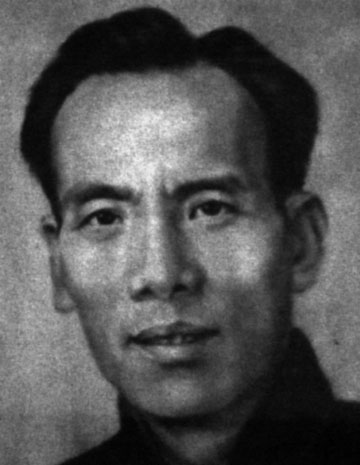
Chan Wah Shun earned his living by working at a money exchange store in Fat Shan and went by the name “Ja Chin Wah” or “Wah Money Changer”. Because of his business, he always had a chance to interact with Jan Sin Shin at his shop. Chan Wah was later admitted as one of Jan Sin Shin’s disciples.
After the death of Jan Sin Shin, in deep respect and appreciation for his Sifu, Chan opened a school at Lin Fa Tei Main Street, to pass on the the art of Wing Chun that was taught to him.
Unlike other popular styles in Fat Shan at that time, Wing Chun Kuen demanded that its practitioners undergo long-term training and dedication. Learning Chinese martial arts became a lifestyle, a fashion, and popular during this period of time. Most disciples were usually from rich families; therefore, Chan Wah could not teach many students at one time. Wing Chun thereof was known as “Sin-ye Kuen” at that time and could not be well promoted.
Chan Wah had only a handful of disciples, including Ng Chung So, Ho Ho Lui, Lui Yu Jai, Yip Man, and Chan Yu Kam (Chan Wah’s son).
There is some confusion surrounding the dates associated with Ng Jung So. According to the commong Yip family dating (where Chan Wah Shun taught for 36 years), Ng would have had to have been born during the 1860s, if not earlier (to have begun learning in 1875), meaning he would have died during the 1930s.
According to the Yiu family dating, Ng was likely born in the 1880s, if not later, since he was reportedly almost 50 years of age in 1936 when he met Yiu Choi, and would have died during the 1950s. According to another source, Ng may have lived as late as the 1960s or 70s.
However, the only person who really promoted Wing Chun was Yip Man. Yip Man, also known as Ip Man, was born on October 1, 1893, in Foshan, China.
At the turn of the 20th century in 1900 Yip Man followed Chan Wah Shun at the age of seven.
Yip Man was a brilliant and hard working boy. Not only Chan taught him personally, Ng Chung So practiced Chi Sau with him all the time. Ng also guided Yip in mastering the system after the death of Chan Wah Shun.
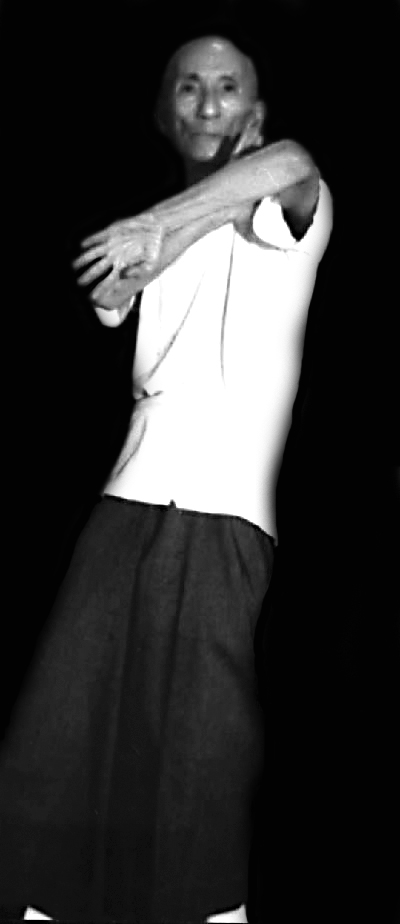
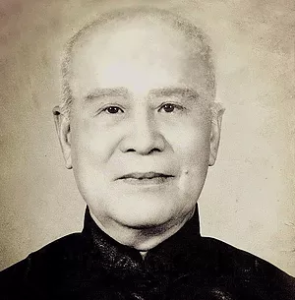
At the age of Fifteen, Yip Man went to Hong Kong to pursue academic studies at St. Stephen’s College in Stanley (Hong Kong was a British colony).
On one occasion, Ip Man was introduced to Leung Bik, the son of Leung Jan (Sifu of Chan Wah Shun). Yip Man followed Leung Bik to further advance his Wing Chun.
Shortly after that, Yip Man went back to Fat Shan and made friends with many martial artists of different styles. His story on sponsoring the competition of Wan Tai Ngau had made him well known in Fat Shan.
After the Second World War, Yip Man left Fat Shan and joined the military force. His achievement included the winning battle in Sha Tong, and the capture of a serious criminal, Law Cho, at San Bun Restaurant on Kung Ching Road. The later incident was widely mentioned by others.
After the Communists took over China, he migrated to Hong Kong in 1949.
With the help of his friend Lee Man Hang, Yip Man earned his living by teaching Wing Chun at the Kowloon Restaurant Association on Da Nam Street in Kowloon, later he moved the school to Hoi Tan Street, Lee Tak Street, Lee Cheng Uk, Tai Wong Temple on Queen’s Road.
During his life of dedicating to Wing Chun, he had improved, promoted, and made Wing Chun famous not only in Hong Kong but everywhere in the world.

